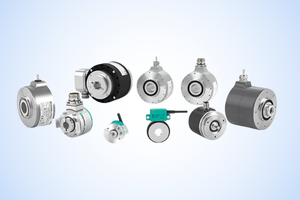Encoders dealers and distributors in India

In a precision servo label application system, the encoder signal is used by the PLC to control the timing and speed of bottle rotation.
In a printing application, feedback from the encoder activates a print head to create a mark at a specific location.
With a large crane, encoders mounted to a motor shaft provide positioning feedback so the crane knows when to pick up or release its load.
In an application where bottles or jars are being filled, feedback tells the filling machines the position of the containers.
In an elevator, encoders tell the controller when the car has reached the correct floor, in the correct position. That is, encoder motion feedback to the elevator’s controller ensures that elevator doors open level with the floor. Without encoders, you might find yourself climbing in or out of an elevator, rather than simply walking out onto a level floor.
On automated assembly lines, encoders give motion feedback to robots. On an automotive assembly line, this might mean ensuring the robotic welding arms have the correct information to weld in the correct locations.
How does an encoder work?
Encoders use different types of technologies to create a signal, including: mechanical, magnetic, resistive and optical – optical being the most common. In optical sensing, the encoder provides feedback based on the interruption of light.
The graphic below outlines the basic construction of an incremental rotary encoder using optical technology. A beam of light emitted from an LED passes through the Code Disk, which is patterned with opaque lines (much like the spokes on a bike wheel). As the encoder shaft rotates, the light beam from the LED is interrupted by the opaque lines on the Code Disk before being picked up by the Photodetector Assembly. This produces a pulse signal: light = on; no light = off. The signal is sent to the counter or controller, which will then send the signal to produce the desired function.
